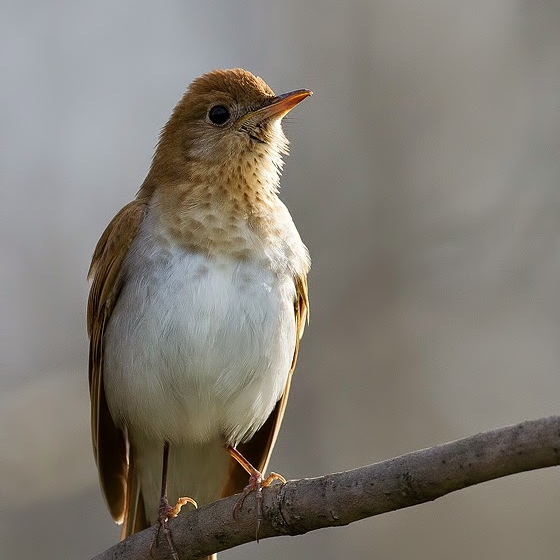Veery

Introduction
An extremely rare visitor, this small, tawny-coloured thrush breeds across much of southern Canada but takes a more westerly migratory route to wintering grounds in southern Brazil, a fact that accounts for its relative rarity in Britain & Ireland compared to some of its congeners.

Key Stats
Status and Trends
Conservation Status
Population Size
Population Change
Population trends of this scarce species are not routinely monitored.
Distribution
This vagrant is too rarely reported to map distribution. Most records of this Transatlantic vagrant are on the Western Isles, Northern Isles and Scilly Isles.
Distribution Change
This vagrant is too rarely reported to map distribution change.
Seasonality
This species has been too rarely reported to BirdTrack during 2011–22 to properly assess seasonality.
Movement
Britain & Ireland movement
Foreign locations of birds ringed or recovered in Britain & Ireland
Dots show the foreign destinations of birds ringed in Britain & Ireland, and the origins of birds ringed overseas that were subsequently recaptured, resighted or found dead in Britain & Ireland. Dot colours indicate the time of year that the species was present at the location.
- Winter (Nov-Feb)
- Spring (Mar-Apr)
- Summer (May-Jul)
- Autumn (Aug-Oct)

Biology
Survival and Longevity
Survival is shown as the proportion of birds surviving from one year to the next and is derived from bird ringing data. It can also be used to estimate how long birds typically live.
View number ringed each year in the Online Ringing Report.
Classification, names and codes
Classification and Codes
- Order: Passeriformes
- Family: Turdidae
- Scientific name: Catharus fuscescens
- Authority: Stephens, 1817
- BTO 5-letter code: VEERY
- Euring code number: 11790
Alternate species names
- Catalan: griveta canyella
- Czech: drozd hnedavý
- Danish: Rustrygget Skovdrossel
- Dutch: Veery
- Estonian: väikerästas
- Finnish: viitarastas
- French: Grive fauve
- German: Weidenmusendrossel
- Hungarian: vörhenyes fülemülerigó
- Icelandic: Húmþröstur
- Italian: Tordo usignolo bruno
- Latvian: rusganais strazds
- Lithuanian: rudagalvis trumpasnapis strazdas
- Norwegian: Viriskogtrost
- Polish: drozdek brunatny
- Portuguese: sabiá-norte-americano / tordo-fulvo
- Slovak: drozd hnedkavý
- Slovenian: obvodni cikovtnik
- Spanish: Zorzalito rojizo
- Swedish: rostskogstrast

